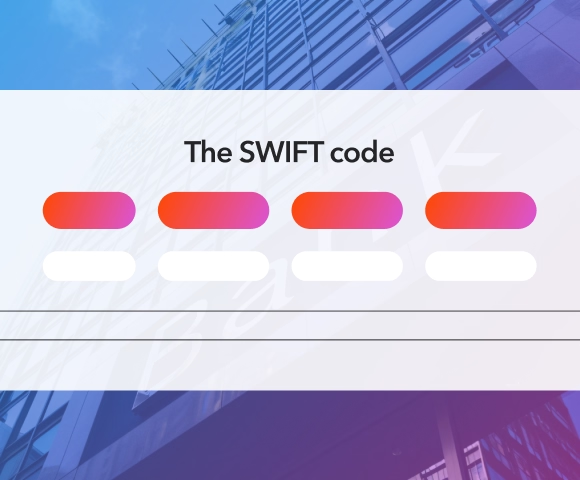April 26, 2023
SWIFT banking is a global network that helps banks and financial institutions securely send and receive money transfer information. Originating in Belgium, it has become essential for international payments. It provides a standard system, reducing errors and delays. For businesses with global teams, it simplifies payroll management.
In this blog, let us shed light on what is SWIFT account, its components, specialities, and challenges so you can handle your international payments better.
What is Swift Account?
A SWIFT account refers to a financial institution’s ability to send and receive messages through the network. This system helps banks communicate securely about international money transfers.
As a result of globalization, you may need to send money overseas. In such cases, your bank does not transfer the funds directly to the recipient’s bank. Instead, it sends a message through the network, instructing the receiving bank to process the payment.
One platform to grow your global team
Hire and pay talent globally, the hassle-free way with Skuad.
Talk to an expertIntroduction to the SWIFT Banking System
The system helps banks and financial institutions communicate securely worldwide. It connects over 11,000 institutions in more than 200 countries.
What is SWIFT?
SWIFT system stands for the Society for Worldwide Interbank Financial Telecommunication. It is not a payment system. Instead, it is a messaging network that financial institutions use to send transaction details securely.
When a bank needs to send money internationally, it uses SWIFT to send a message to the receiving bank. This message contains all the details required for the transaction, making international business settlements faster and safer.
History and Evolution of SWIFT
Before this system, banks used TELEX to communicate. It was slow, manual, and prone to errors.
In 1973, 239 banks from 15 countries created SWIFT to solve these problems. By 1977, it had replaced TELEX, introducing a secure and efficient way for banks to communicate. Over the years, this system has grown, handling millions of messages daily.
Ownership and Governance of SWIFT
A single company or government does not own this system. It is a member-owned cooperative with around 3,500 financial institutions as shareholders. These members include banks and other financial organizations that use the SWIFT system.
SWIFT is headquartered in La Hulpe, Belgium. It operates under the supervision of several central banks, including those from the G10 countries, the European Central Bank, and the National Bank of Belgium. A board of 25 directors, elected by its shareholders, governs the organization and oversees SWIFT’s operations.
Understanding SWIFT Accounts
Having a SWIFT account means the bank can send and receive messages using the network. This system processes transactions correctly, even when it involves multiple banks.
Components of a Swift Account
The most important component of the account is the SWIFT code, also called the BIC (Bank Identifier Code).
Another important identifier in international banking is the IBAN (International Bank Account Number). While the SWIFT code identifies a bank, the IBAN identifies an individual account within that bank. Some countries require both for international transfers.
SWIFT Account Meaning and Usage
It is only a messaging system. It does not move money, hold accounts, or manage funds. It simply sends secure instructions between banks to process transactions.
Other systems, such as Fedwire (US), CHIPS (US), and CIPS (China), facilitate international payments, but the SWIFT banking system remains the most widely used network, connecting banks worldwide.
How the SWIFT Payment System Works
It is trusted by banks worldwide because it is fast, accurate, and highly secure. It sends secure messages between banks with payment instructions to ensure that international money transfers happen smoothly and correctly.
SWIFT Messaging System
The SWIFT messaging network, called SWIFTNet, connects banks worldwide. Banks can access it through leased lines, the internet, or cloud services. This ensures that payment instructions are delivered quickly and securely.
The Role of SWIFT Codes (BIC)
The BIC consists of 8 or 11 characters. It acts as a global connectivity language for banks and ensures your transaction is not lost in translation.
It consists of a bank code, country code, location or city code, and a branch code.
Transaction Process Flow
A payment via this system involves several steps to ensure accuracy and security.
Step 1: Payment initiation
A bank starts the process by sending a message with payment details. This message includes:
- Sender and receiver bank details
- Account numbers
- Amount and currency
Step 2: Identifying banks with SWIFT codes
Each bank in the transaction is identified using codes to ensure the payment goes to the right institution.
Step 3: Secure message transmission
The payment message is sent through the network using standardized formats.
Step 4: Nostro and Vostro accounts
To move money across borders, banks use two types of accounts:
- Nostro account: A foreign currency account a bank holds in another country
- Vostro account: A domestic currency account held for a foreign bank
Funds move between these accounts to complete the transaction.
Step 5: Processing and completion
The receiving bank verifies the details and processes the payment. The money is transferred through the banking system, following international rules and security checks.
Benefits of Using the SWIFT System
Without this system, international banking would be slow, complicated, and risky. The SWIFT banking system ensures that money moves across borders safely and efficiently, supporting global trade, investment, and economic growth.
Enhanced Security Measures
This system uses encryption, digital signatures, and strict security protocols to protect messages from fraud and cyber threats.
It also introduced SWIFT GPI (Global Payments Innovation), which allows banks and businesses to track international payments in real time. This improves transparency and reduces delays.
Speed and Efficiency in Transactions
The system messages reach banks within seconds, making international banking fast and efficient. The highly reliable system ensures that payment instructions arrive without delay or error.
This is crucial for global trade, where businesses must process payments without disruptions.
Global Reach and Standardization
SWIFT system follows a strict format for messages so that every bank understands payment instructions without confusion.
It connects over 11,000 financial institutions in more than 200 countries. This vast network ensures that banks worldwide can communicate and manage global payroll.
SWIFT vs. Other Financial Systems
SWIFT is a leading system for international banking, but it is not the only one. Other financial systems, such as IBAN and blockchain-based technologies, also play important roles in cross-border transactions. Each system has its purpose, strengths, and challenges.
SWIFT vs. IBAN
IBAN (International Bank Account Number) is used to identify a specific bank account. It consists of up to 32 alphanumeric characters. IBAN is used primarily in Europe and some neighbouring countries, while SWIFT is the global standard for international transactions.
SWIFT codes (BIC) identify a bank or financial institution, not an individual account. They have fewer characters than IBAN and are used worldwide by banks, brokerages, and clearinghouses.
SWIFT vs. Blockchain-Based Systems
Blockchain is an emerging financial technology that could change global payments. Unlike the former, which relies on centralized banks, blockchain uses decentralized networks to make payments faster, more transparent, and cheaper.
However, this system remains dominant in international banking because of its widespread adoption, security, and compliance. Banks using this system would require significant upgrades, which can be expensive and time-consuming if they want to upgrade to blockchain.
Challenges Facing the SWIFT System
The SWIFT payment system, despite its global reach, faces several challenges that could impact its effectiveness.
Cybersecurity Threats
In recent years, there have been high-profile breaches where hackers targeted the network, exposing vulnerabilities in banks’ security systems.
Even though this system has strong security measures, banks must constantly update their systems to protect against evolving cyber threats.
Regulatory Compliance
Compliance with global regulations is another complex challenge. When using this system, banks must adhere to strict anti-money laundering (AML) and counter-terrorism financing (CTF) laws.
This involves detailed checks on transactions and account holders, eventually increasing the time and cost of processing payments.
Competition and Technological Advances
New payment technologies, especially blockchain-based systems, create competition for SWIFT systems.
While this system is adapting by exploring blockchain solutions, it still faces pressure from emerging systems that can process payments outside traditional banking infrastructures. To stay competitive, it has been improving its services by offering faster payment options and better tracking through initiatives like Global Payments Innovation (GPI).
Future of the SWIFT System
As the global financial landscape transforms, the SWIFT system adapts to meet these changes and remains a key player in the industry.
Technological Innovations
The network is upgrading its infrastructure to include AI, quantum computing, and postquantum cryptography. As payments become more fragmented, this system is focused on ensuring interoperability between different systems, technologies, and currencies.
Moreover, this system is enhancing its automation and standardization efforts. It aims to increase efficiency and reduce the risks of human error, making the overall system more reliable.
Expansion of Services
In addition to its core messaging service, SWIFT financial system is expanding its range of value-added services. It includes tools for checking payments for errors before processing, providing better experiences for consumers and small businesses.
It is also focused on collaboration. The network works closely with public and private stakeholders to create a more inclusive global financial ecosystem. It also pushes for the broader adoption of ISO 20022 payment data standards, which will help financial institutions and companies streamline payments and comply with the law.
Practical Guide: How to Use SWIFT
The SWIFT pay system takes 1 to 4 working days to process a transfer, depending on factors such as the destination country, time zones, and intermediary banks involved. The cost includes transfer fees, recipient fees, correspondent fees, and sometimes foreign exchange fees.
If your bank does not have a direct relationship with the recipient's bank, the transfer may pass through intermediary banks, potentially adding to the cost and duration of the transfer.
Sending Money
To initiate an international wire transfer using the SWIFT system, you can:
- Gather information such as:
- Recipient's full name
- Recipient's bank name, address, and BIC code
- Recipient's account number or IBAN
- Transfer amount and currency:
- Go to your bank's branch or use their online banking platform.
- Fill out the international wire transfer form with the gathered information.
- Ensure all details are accurate to prevent delays or errors.
- Please review the fees and exchange rates applied. If intermediary banks are involved, banks may charge transfer, recipient, and correspondent fees.
- Once satisfied, authorize the transaction. Request a receipt or confirmation number for your records.
Receiving Funds
To receive international payments through the SWIFT system:
- Provide accurate information on:
- Your bank’s correct account number, or IBAN.
- Your bank's BIC code
- Provide your bank's BIC code and account information to the sender.
- Regularly review your account statements or online banking portal for the arrival of funds.
- Once the funds are received, confirm with the sender to ensure the transaction was successful.
SWIFT Codes: A Deep Dive
SWIFT codes are essential for processing international payments. They identify banks and financial institutions during transactions.
Structure of a SWIFT Code
Each part of the code has a specific purpose:
- The bank code consists of 4 characters
- Country code consists of 2 characters
- The location code consists of 2 characters
- The branch code is optional and it consists of 3 characters
For example, if a SWIFT code is DEUTDEFF, here:
- DEUT stands for Deutsche Bank.
- DE is the country code for Germany.
- FF indicates the bank’s location in Frankfurt.
- No branch code is included, making it an 8-character SWIFT code.
How to Find Your Bank’s SWIFT Code
Finding the correct code for your bank is simple:
- Your code is often listed on your paper or digital bank statement.
- You can also find it by logging into your online banking or app.
- Many banks list their codes on their official websites.
- If you are unsure, you can contact your bank directly to get the correct code.
The Importance of Accurate SWIFT Codes
This code helps prevent errors and keeps transactions secure. If you use the wrong code, your transaction may be delayed, or the funds may be sent to the wrong bank.
Always double-check that the recipient’s code is accurate when sending money. Similarly, when receiving payments, ensure your code is shared correctly to avoid issues.
How Skuad Can Help
Understanding what is SWIFT account is, makes you prepared for international money transfers. However, it is not ideal for managing global payroll without a foreign legal entity.
Skuad offers a better EOR solution for businesses expanding internationally. It is an all-in-one platform simplifying hiring, paying, and managing employees or independent contractors globally.
Skuad allows firms to onboard talent worldwide without needing a legal entity. The platform also offers free global payments, with services starting at just $199 monthly.
If you want to grow your international team while ensuring compliance and efficiency, discover how Skuad can help your business. Schedule your first demo today!
FAQs
What is a SWIFT bank account?
A SWIFT bank account is held at a financial institution that uses the SWIFT network for international transactions.
How do I open a SWIFT account?
To open a SWIFT account, go to the SWIFT website, create your account with a user registration form, and register your organization. Next, submit all the documents and approve them to have your created.
What is my SWIFT account?
Your SWIFT account is the account at your bank that can receive international wire transfers via the SWIFT network.
What is an example of a SWIFT payment?
If you, an American bank account user, want to send money to your friend in Venice, you can use the SWIFT code and your friend’s account details to make this international transaction. This becomes an example of SWIFT payment.
About the author
Nathan Williams is a Global Payroll Specialist and Finance Consultant. With a background in banking and finance, he is passionate about modern tech practices in payroll management and using global payroll platforms for global payments.









